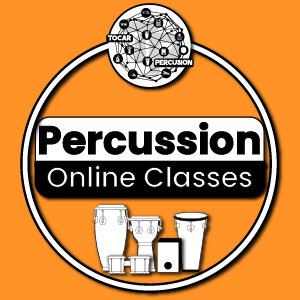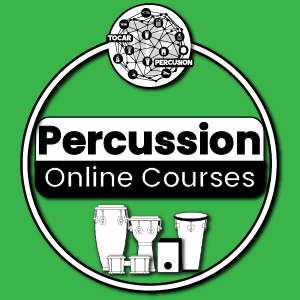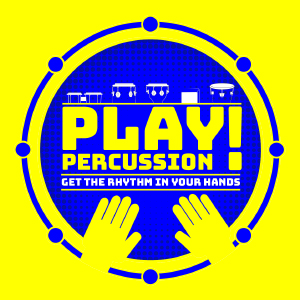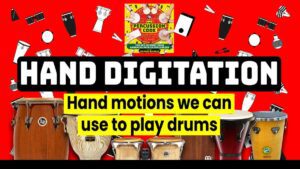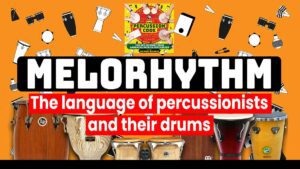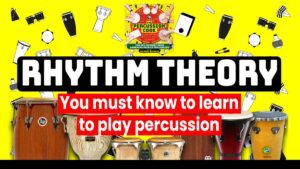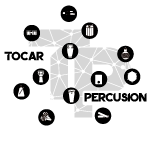Start your learning path in percussion today!
HAND DIGITATION. Hand motions we can use to play percussion drums
Author: Facundo Alvarez, Percussion teacher and Facilitator
Do you know that there are several hand digitation that you can use to play several percussion instruments such as: Bongo, Cajon, Congas, Djembe, among others?
And also, do you know that to play in a specific rhythm, you need to use a specific hand digitation?.
In this post I´m going to share with you the main concepts about hand digitation in percussion.
To start is important for you to know that hands digitations are divided in two big groups:
1) Hands digitations in which you don’t have to repeat your hands to play
2) Hands digitations in which you have to repeat your hands to play
Hand digitations without hand repetition
So the first hand digitation that you need to know and learn to play percussion is the simplest one. It´s called 1 & 1 and it is the most recommended for beginner percussion students to start playing their percussion instrument..
1 & 1 Hand Digitation on percussion
The concept in the 1 & 1 digitation is that you’re going to play like you walk, what I mean is your hands are going to move one at a time without repetition. So the sequence is going to be: right, left, right, left, right, left, right, left.
In that way, you’re going to look for achieve a hand motion similar to what you do with your feet when you walk. When you walk, you get one foot after the other and move forward step by step.
Intensive practice with this hand digitation is going to release you from thinking about hand dynamics to focus just on playing the drum.
1 & 1 hand digitation can be used to play rhythms in several drums such as: Bongo, Cajon, Conga, Djembe, among others.

Let’s see how we can play a rhythm in the djembe using this hand digitation. I´m going to play a rhythm from the Kuku Ensemble. To play the rhythm I’m going to start playing with my right hand and move forward alternating hands to play the following sounds.
- The playing sequence is going to be:
1 – First hit is played with the right hand, the sound is a tone
2 – Second hit is played with the left hand, the sound is an open
3 – Third hit is played with the right hand, the sound is an open
4 – Fourth hit played with the left hand, the sound is an slap
So, once that we play the last hit we start all over and loop the rhythm to play it repeatedly .
Ghost Notes hand digitation on percussion
The second hand digitation uses the same logic as 1 & 1 digitation, but adding a new element that is the ghost note. So you´re going to play without repeating your hands, But now you’re going to add the ghost notes in between the accents that you use to play a specific rhythm..
Let me show you some examples, first I´m going to play a funk rhythm in the cajon
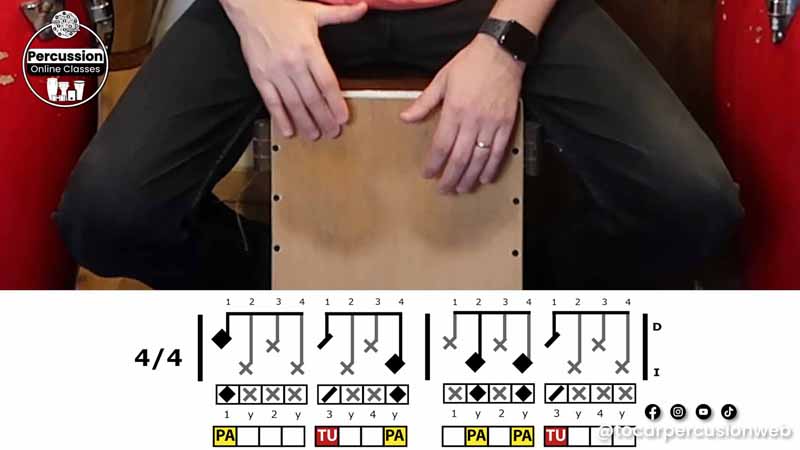
Also, I´m going to play Martillo rhythm in the bongo.
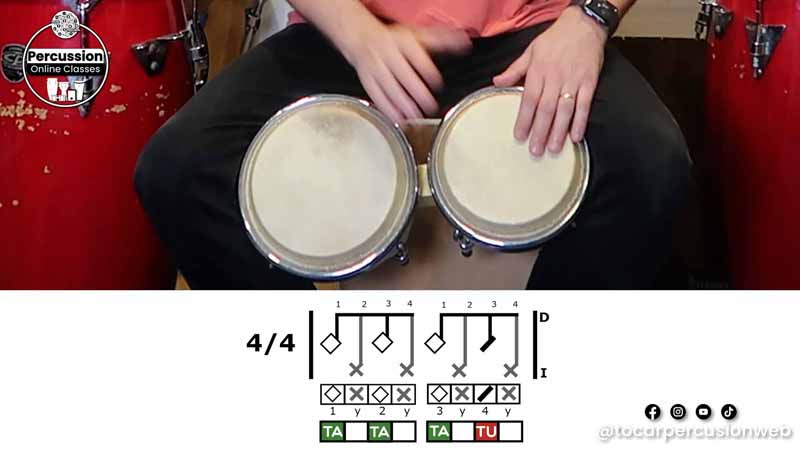
This hand digitation can be used in drums such as: Bongo, Cajon, Conga, Djembe, among others.
Learn to play percussion online
¡Choose the way to learn to Play Percussion
that best suits your times and needs!
Learn to Play Percussion: Bongó, Conga, Cajón, Djembé, Timbal Brasilero
Percussion Online Classes
In the Online Percussion Classes, I offer individual and face to face classes for you to start learn to play percussion from scratch and learn to play and make music with the percussion instrument you like – Bongó, Cajón, Conga, Djembé or Timbal Brasilero.
Percussion Online Courses
In the Percussion Online Courses I offer you different virtual and self-paced courses options for you to start playing percussion from scratch and develop yourself as percussionist. Courses include several percussion instrument such as: Bongo, Cajón, Conga, Djembé or Timbal Brasilero.
Percussion Online Group Classes
In the Percussion Online Group Classes I offer grupal and face to face classes for you to start learn to play percussion from scratch and learn to play and make music with the percussion instrument you like – Bongó, Cajón, Conga, Djembé or Timbal Brasilero.
Activities suitable to all ages and levels
You don´t need to have previous knowledges of music or percussion to get started.
Hand digitation with hand repetition
The first hand digitation that I´m going to show in this group is called “Double Strokes playing”
As the name tells, in this hand digitation you´re going to play rhythms combining “Double strokes” that are played with the same, so you´re going alternate hand repetition in your both hands.
Double Stroke hand digitation in percussion
The most known pattern that you can play with this hand digitation is “Marcha” that is used to play son and salsa music with the congas.
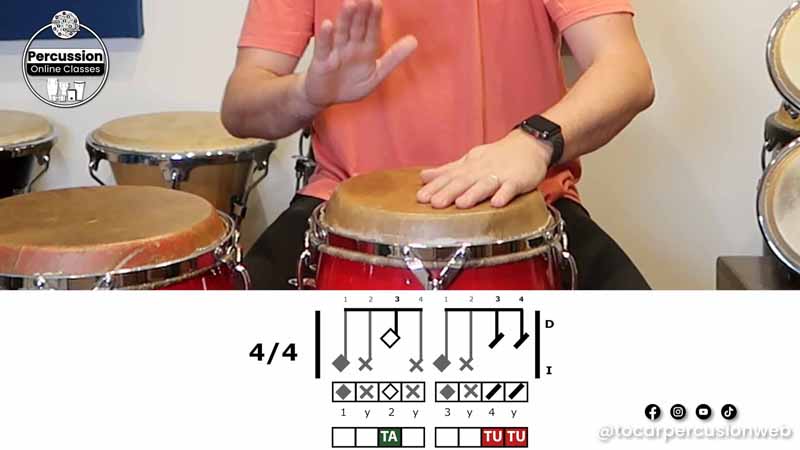
So this hand digitation is mostly played in congas and Bongo, you can also use it to play some rhythms in Cajon, but it’s not recommended for playing the djembe.
Paradiddle Hand Digitation in Percussion
This hand digitation is an adaptation of Drumset rudiments to percussion instruments. Basically is a way of digitate hands to play the snare drum and toms of the drumset. A paradiddle is a sequence of hand movements that combines 1 & 1 playing with double strokes. You have several paradiddle that you can practice individually to learn them and that also you can combine to build different rhythm both in drumset and in percussion drums.
Let me show you an example of Rumba Guaguancó rhythm played in congas.
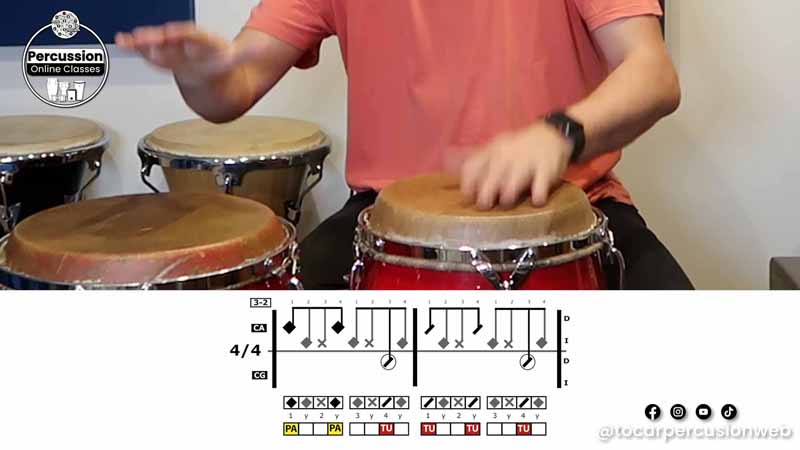
Paradiddle are used mostly in congas and maybe in bongo.
“Leader hand” hand digitation in percussion
This hand digitation belongs mainly to African music, mostly to African music from regions in which the djembe is not the main instrument. Mainly it is used in music in which the drums are played using a stick and hand.
You can also find his way of playing in Brazil as well, if you look into Samba Music you´re going to find several rhythms and instrument are played in that way, and also in Uruguay where the Candombe include several instruments: Chico, Piano and Repique that are played using this technique.
Let me show an African rhythm played using this hand digitation.
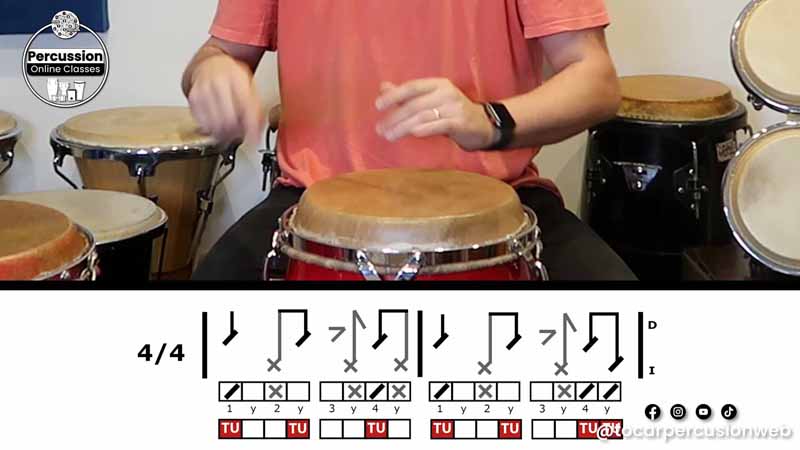
“Independent Hand” hand digitation in percussion
In this hand digitation each hand plays a rhythm that combines to build the full rhythm you play.
This hand digitation is used mostly in congas, because it is connected with the heritage of latin music. Most of the Afro-Latin rhythms that you can play on congas, using 2 or more congas, are the combination of two different rhythms played by different drums -conga and tumbadora- in the traditional musical ensemble.
So, the rhythm that you play in the congas is the combination of one rhythm played with your right hand and other played with your left hand.
So to show you what I’m talking about, I’m going to play rhythm for Puerto Rico, I´m going to play Plena. So, in Plena played in two congas, your right hand is going to play a simple rhythm base on the tumbadora, while your left hand is going to play a rhythm clave on the conga.
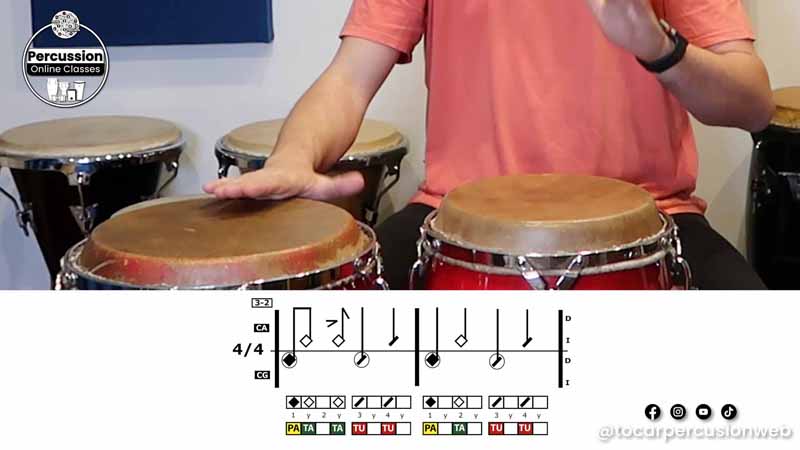
Well, this is the end of the video.
I hope you find it useful and entertaining.
I see you in the next video.
percussion facilitator
Facundo Alvarez
Percussion Facilitator
For 20 years I´ve dedicated myself to develope educational and recreational materials and experiences, with the goal of facilitate access to percussion learning to people of all ages
In all the projects I work motivated by the premise that "Percussion is for everybody" and that "Everyone can learn to play percussion".
My main goal is to help, as many people as I can, to live the unique experience of making music with percussion instruments.
